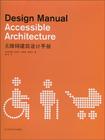无障碍建筑设计手册
出版时间:2009-9 出版社:辽宁科学技术出版社 作者:(德)菲希尔,(德)莫伊泽 编,鄢格 译 页数:327 译者:鄢格
Tag标签:无
前言
Barrier-flee architecture. This smacks of old peoples home, housing for the disabled or hospitals. This term is still associated with buildings for "disadvantaged fringe groups". But barrier-free architecture is valued by far more people than the disabled or aged, for whom it eases participation in private and social daily life. Because being disabled does not only mean that one has to get to grips with ones environment with permanent physical constraints. A disability may also relate to a situation. Por example, when one has to climb a staircase, loaded down with suitcases; when one cannot get the shopping trolley from the supermarket to the car in the car park; when one stands helplessly in front of a staircase with a pram or one does not know how to get the pram from the platform into the tram carriage. That is why there are now low-rise trams and buses with appropriately modified platforms. The new technology being used in public transport is an excellent example of just how much broader the definition of "disabled" has become - and how universal the solutions for barrier- free access can be. In this case, there is a rule of thumb: if a small child can get on without difficulty, it is just right for an old person with a walking stick; that which helps a mother with a pram is also of assistance to people with crutches, walking frames or wheelchairs. Therefore, it is no longer a question of fulfilling the politically correct and meanwhile completely unrealistic demand of making a building "wheelchair-friendly", but rather a question of creating a freedom from barriers which is not stigmatised or intended to serve as an a alibi but which is a natural matter of course. What barrier freedom means German legislation also reflects this credo. In the so-called Equality for Disabled Persons Act, which is supposed to regulate implementation at national level, it is stated that: "Buildings and other structures, means of transport, technical tools, information processing systems, acoustic and visual sources of information and communication facilities and other designed areas of living are barrier-free if they are accessible to and usable by disabled people in the normal way, without special difficulty and completely without assistance. Barrier-free building means that the world we create ourselves - from pavement to house to light switch must be so designed that it is open to all people, irrespective of their given physical condition or age, without assistance and without restriction.
内容概要
无障碍设计使独立自主的生活方式变为可能,为不同群体(包括不同年龄段的人群)共同生活提供了便利条件。本书精选了30个无障碍建筑案例,每个项目都配以文字介绍、平面图、图片以及图解,用一种现代化的建筑语言帮助人们建造自己的生活空间。此外,对无障碍建筑的强烈呼声以及对DIN 18025(德国轮椅使用者住宅标准)的评价更加丰富了本书的内容。
书籍目录
序言告别轮椅坡道非障碍建筑无障碍自由房产业的责任与挑战无障碍旅游建筑如何影响旅游业国际通用残障指示标识案例卡尔克青年人冒险中心老年人护理中心老人公寓阿洛斯艺术博物馆巴斯里斯肯住宅盲人机构尊德博物馆对话海拉·罗尔费斯单户住宅对话鲁曼·施奈尔巴克对话弗洛里安·霍菲人行桥多功能住宅建筑之家霍斯曼特疗养院理想厨房莱昂公园住宅区教育培训中心别墅奔驰博物馆乡村广场圣尼右拉斯教会中心活动房公寓式住宅老年中心穆尔腾格特老年住宅办公室及车间大厦对话奥利弗·霍利戴斯别墅施派尔纪念教堂前庭餐厅厨房无障碍住宅设计要求德国工业标准18025第1、2部分规定设计师、工程师、建筑者准则残疾分类及具体要求比较术语横向通道纵向通道公寓服务设施设计师姓名及图片信息来源总表
图书封面
图书标签Tags
无
评论、评分、阅读与下载
用户评论 (总计2条)
- 无障碍建筑设计手册,读起来还行。
- 代单位买的,领导说不错。
